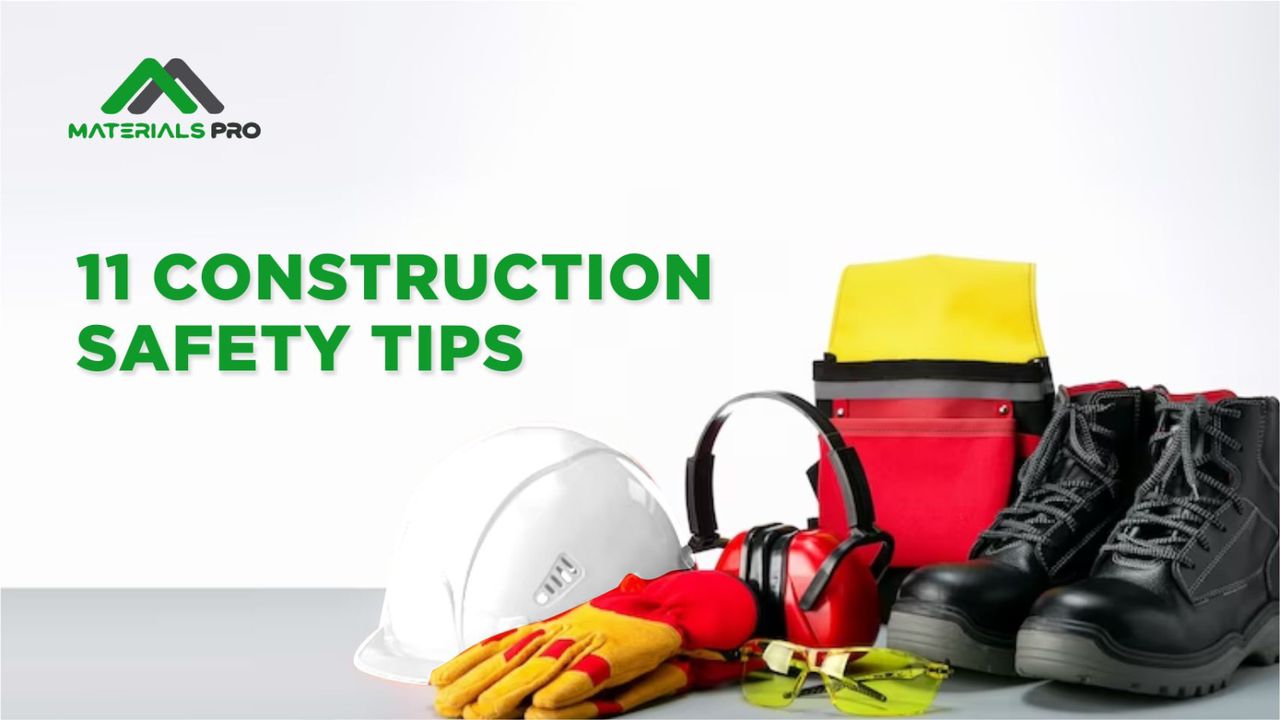11 Construction Safety Tips
MaterialsPro
Dec 07, 2023 - 4 minutes
Without adequate safety measures, the risk of accidents in a construction site skyrockets. Falls from heights, electrical mishaps, and equipment-related incidents can lead to severe injuries or even fatalities. Ignoring safety precautions can lead to increased costs. Medical bills, legal fees, and potential fines for non-compliance can escalate, impacting the overall financial health of the construction project.
Implementing a safety plan for construction sites enables teams to significantly reduce these risks.
Here are key construction safety rules, indispensable for safeguarding the lives of workers and visitors alike:
- Facilitate Proper Training: Ensuring safety on construction sites requires thorough training. Before undertaking any tasks, it is essential for all workers to undergo appropriate orientation, equipping them with an understanding of potential site hazards and the knowledge to protect both themselves and others.
- Always wear personal protective equipment (PPE) : For the safety of everyone on the construction site, it is essential that all workers and visitors adhere to the wearing of specified personal protective equipment (PPE). This precaution is designed to decrease exposure to the various hazards present, with common PPE items including goggles, helmets, gloves, ear muffs or plugs, boots, and high-visibility vests and suits.
- Keep the site tidy and well-organized: The risk of accidents is significantly lowered in a clean and organized work setting. Employers must consistently invest effort in cleaning and maintaining the construction site, ensuring the removal of debris and materials that could potentially cause trips or falls.
- Avoid overcrowding in the work Area: Crowding is a common phenomenon on construction sites, especially when there are large teams involved. However, without proper management, the risk of injury can escalate. Hence, it is a wise decision to restrict the number of people in a work area. For instance, if heavy machinery is in use, non-participants in the task should be instructed to evacuate the area until the work is finished.
- Communicate Effectively: Maintaining effective communication is essential to prevent accidents on construction sites. Employers should engage in regular communication with their workforce and implement explicit protocols for reporting accidents, injuries, or hazardous situations.
- Establish a protocol for handling emergencies: An emergency response plan provides instructions for the workforce during emergencies like natural disasters, fires, hazardous material spills, or other incidents. Form a specialized team responsible for handling emergency crises, addressing inquiries, and documenting potential hazards, quality issues, or near misses.
- Consistently examine and service machinery: To enhance safety, it is important to regularly inspect and maintain all equipment to prevent malfunctions that could lead to injuries or accidents.
- Conduct consistent safety meetings: Regular safety meetings are essential for keeping workers updated on the latest safety procedures and for identifying potential hazards before they transform into accidents. Employers should make it a standard practice to conduct safety meetings regularly, involving all employees.
- Check tools and equipment beforehand: Before starting the task, make sure the tools and equipment you plan to use are in good condition, free from any defects or damage
- Keep a communication device on hand: Emphasizing construction safety involves ensuring that your employees are equipped with communication tools or personal safety devices, such as radios or cellphones, allowing them to contact others in the event of a fall and inability to stand.
- Create a culture of safety: construction sites are inherently hazardous environments where workers are exposed to various risks, such as heavy machinery, elevated work areas, and potentially dangerous tools. Fostering a culture of safety helps mitigate these risks and reduces the likelihood of accidents, injuries, and fatalities.
All employers and site managers must prioritize construction site safety as a non-negotiable commitment in 2024. The adherence to these essential top 11 safety guidelines is important in safeguarding workers and curbing the likelihood of accidents. The promotion of a secure and healthful workspace is advantageous for everyone involved, emphasizing the shared duty to guarantee the maximum possible safety on construction sites.

